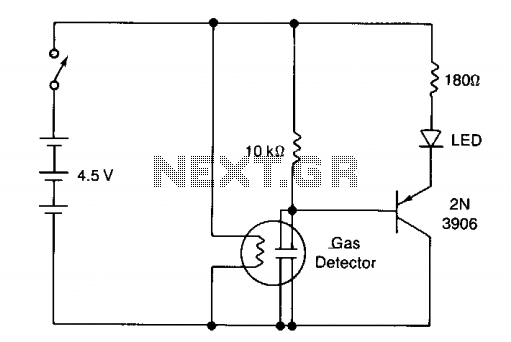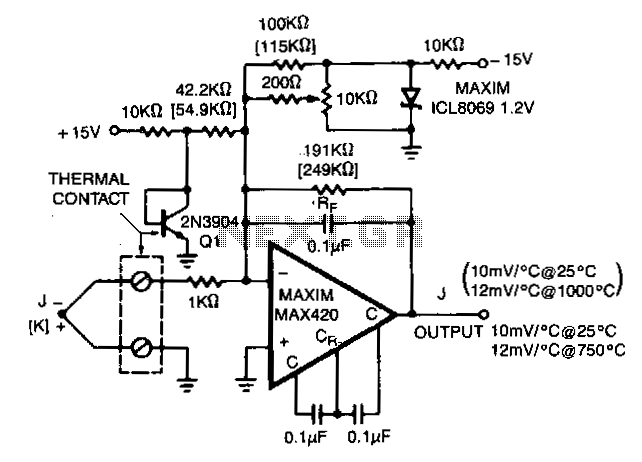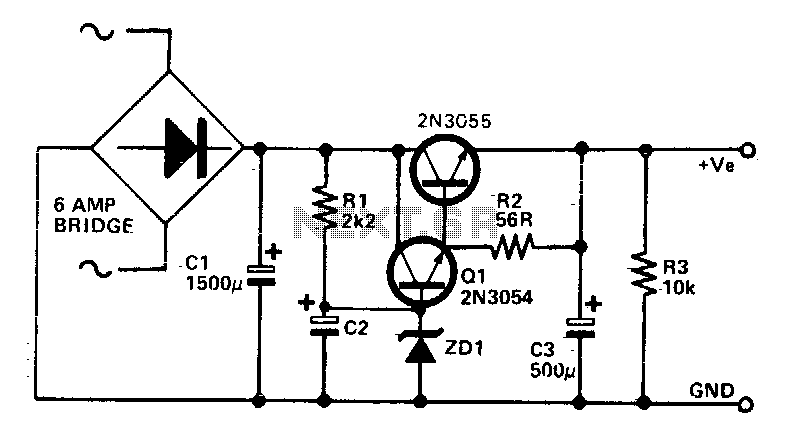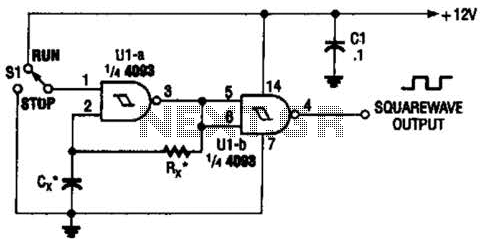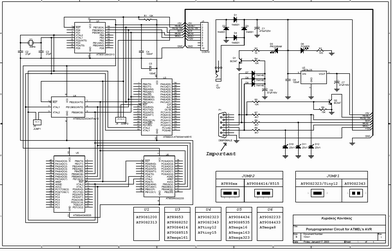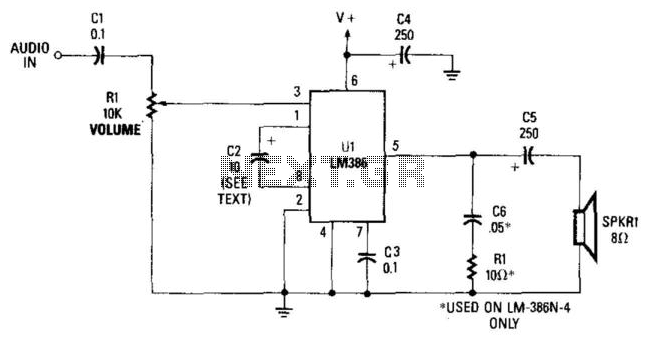
Split Power Supply Circuit for Power Amplifier
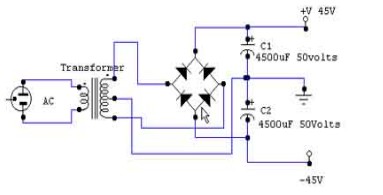
This is a simple circuit diagram for a 150W power amplifier. The circuit can be constructed without a printed circuit board (PCB). The power output ranges from 100W to 150W, depending on the power supply and the Darlington transistors used in the amplifier. A heatsink is essential as the final transistor will generate significant heat during operation. This is a Hi-Fi power amplifier circuit based on a single power amplifier integrated circuit (IC) TDA2040. The TDA2040 can deliver a power output of 20W. In a bridge configuration using two TDA2040s, the output can reach 30W with an 8-ohm loudspeaker. The TDA2040 is a monolithic integrated circuit in a Pentawatt package. For those seeking to build an amplifier that produces high-quality sound with low audio distortion, this amplifier is a suitable choice. The circuit employs a split power supply with a maximum input voltage of 25V. A heatsink should be attached to the power IC to prevent overheating. Additionally, there is a Hi-Fi power amplifier circuit built with the TDA2050 power IC, which can produce an output of up to 32W, characterized by good sound quality, high power, and very low distortion, making it ideal for simple and economical audio systems. Furthermore, a 400W power amplifier circuit, often referred to as the "safari" amplifier, is constructed using pairs of power transistors TIP31 with TIP32 and 2N3055 with MJ2955. These transistors are well-known and widely utilized in amplifier and power supply circuits. It is crucial to use an aluminum heatsink in this configuration. Lastly, there is a very high 1500W power amplifier circuit diagram designed by Rod Elliott, which utilizes ten pairs of power transistors MJ15024 and MJ15025 (or MJ21193/MJ21194), requiring a total of 20 power transistors for final amplification. Given the high audio output, a robust power supply is necessary.
The 150W power amplifier circuit is designed for straightforward assembly, making it accessible for hobbyists and engineers alike. The use of Darlington transistors enhances the current gain, allowing for efficient power handling and amplification. The significance of proper thermal management through the installation of a heatsink cannot be overstated, as excessive heat can lead to thermal runaway and eventual failure of the transistors.
The TDA2040 IC operates efficiently in audio applications, providing a reliable solution for achieving high fidelity sound output. The bridge configuration effectively doubles the output power, making it suitable for driving larger speakers or subwoofers. The circuit's reliance on a split power supply enhances its performance, ensuring that the amplifier operates within optimal voltage levels.
The TDA2050 amplifier circuit further exemplifies the potential for high-quality audio reproduction in compact designs. Its capability to deliver 32W output with minimal distortion makes it a preferred choice for budget audio systems, allowing users to enjoy enhanced sound quality without significant investment.
The "safari" amplifier circuit, with its robust design utilizing well-regarded power transistors, represents a powerful option for audio amplification needs. The inclusion of a substantial heatsink is vital for maintaining performance and reliability under high load conditions.
In contrast, the 1500W power amplifier circuit by Rod Elliott showcases an advanced design capable of delivering exceptional audio output for professional applications. The extensive use of power transistors ensures that the circuit can handle high power demands, necessitating careful consideration of the power supply specifications to match the amplifier's capabilities.
Overall, these amplifier circuits illustrate a range of options for various audio amplification needs, from simple home audio systems to professional-grade setups, emphasizing the importance of circuit design, component selection, and thermal management in achieving desired performance outcomes.This is the very simple circuit diagram of 150W power amplifier. The circuit is easy enough to built without PCB. The power output range is about 100-150W depends to the power supply and the Darlington`s you use for the amplifier. Heatsink is a must since the final transistor is going to hot when the amplifier. This is a Hi-Fi power amplifier cir cuit build based on single power amplifier IC TDA2040. The single TDA2040 has able to deliver 20W power output. The bridge amplifier which consist of double TDA2040 can deliver 30W power output (8 ohm loudspeaker). About power amplifier IC TDA2040: The TDA2040 is a monolithic integrated circuit in Pentawatt. If you want to create an amplifier that is able to produce a good sound output with low distortion audio, then this amplifier could be the right option for you.
This circuit using power supply split type with a maximum input voltage of 25V. Heatsink should be installed on the power IC to avoid excessive. Here is a Hi-Fi power amplifier circuit, built with a power IC TDA2050. This circuit will produce a power output up to 32watt. With good sound quality, high power and very low distortion feature, this circuit will be very suitable for simple and cheap audio systems. TDA2050 Amplifier Schematic diagram: TDA2050 Amplifier PCB Design: About. This 400W power amplifier circuit often called as "safari" amplifier. The 400W power amplifier built using two couples of power transistors that are TIP31 with TIP32 and 2N3055 with MJ2955.
These transistors are well known and widely used for the amplifier circuit and power supply circuit. Take a note that you must use aluminium heatsink. This is a very high 1500W power amplifier circuit diagram by Rod Elliott. The circuit is built using 10 pairs of power transistor MJ15024 and MJ15025 (or MJ21193/MJ21194), then it will use 20 pieces of power transistor for final amplification. With very high power audio output, then of course it will need power supply with. 🔗 External reference
The 150W power amplifier circuit is designed for straightforward assembly, making it accessible for hobbyists and engineers alike. The use of Darlington transistors enhances the current gain, allowing for efficient power handling and amplification. The significance of proper thermal management through the installation of a heatsink cannot be overstated, as excessive heat can lead to thermal runaway and eventual failure of the transistors.
The TDA2040 IC operates efficiently in audio applications, providing a reliable solution for achieving high fidelity sound output. The bridge configuration effectively doubles the output power, making it suitable for driving larger speakers or subwoofers. The circuit's reliance on a split power supply enhances its performance, ensuring that the amplifier operates within optimal voltage levels.
The TDA2050 amplifier circuit further exemplifies the potential for high-quality audio reproduction in compact designs. Its capability to deliver 32W output with minimal distortion makes it a preferred choice for budget audio systems, allowing users to enjoy enhanced sound quality without significant investment.
The "safari" amplifier circuit, with its robust design utilizing well-regarded power transistors, represents a powerful option for audio amplification needs. The inclusion of a substantial heatsink is vital for maintaining performance and reliability under high load conditions.
In contrast, the 1500W power amplifier circuit by Rod Elliott showcases an advanced design capable of delivering exceptional audio output for professional applications. The extensive use of power transistors ensures that the circuit can handle high power demands, necessitating careful consideration of the power supply specifications to match the amplifier's capabilities.
Overall, these amplifier circuits illustrate a range of options for various audio amplification needs, from simple home audio systems to professional-grade setups, emphasizing the importance of circuit design, component selection, and thermal management in achieving desired performance outcomes.This is the very simple circuit diagram of 150W power amplifier. The circuit is easy enough to built without PCB. The power output range is about 100-150W depends to the power supply and the Darlington`s you use for the amplifier. Heatsink is a must since the final transistor is going to hot when the amplifier. This is a Hi-Fi power amplifier cir cuit build based on single power amplifier IC TDA2040. The single TDA2040 has able to deliver 20W power output. The bridge amplifier which consist of double TDA2040 can deliver 30W power output (8 ohm loudspeaker). About power amplifier IC TDA2040: The TDA2040 is a monolithic integrated circuit in Pentawatt. If you want to create an amplifier that is able to produce a good sound output with low distortion audio, then this amplifier could be the right option for you.
This circuit using power supply split type with a maximum input voltage of 25V. Heatsink should be installed on the power IC to avoid excessive. Here is a Hi-Fi power amplifier circuit, built with a power IC TDA2050. This circuit will produce a power output up to 32watt. With good sound quality, high power and very low distortion feature, this circuit will be very suitable for simple and cheap audio systems. TDA2050 Amplifier Schematic diagram: TDA2050 Amplifier PCB Design: About. This 400W power amplifier circuit often called as "safari" amplifier. The 400W power amplifier built using two couples of power transistors that are TIP31 with TIP32 and 2N3055 with MJ2955.
These transistors are well known and widely used for the amplifier circuit and power supply circuit. Take a note that you must use aluminium heatsink. This is a very high 1500W power amplifier circuit diagram by Rod Elliott. The circuit is built using 10 pairs of power transistor MJ15024 and MJ15025 (or MJ21193/MJ21194), then it will use 20 pieces of power transistor for final amplification. With very high power audio output, then of course it will need power supply with. 🔗 External reference
